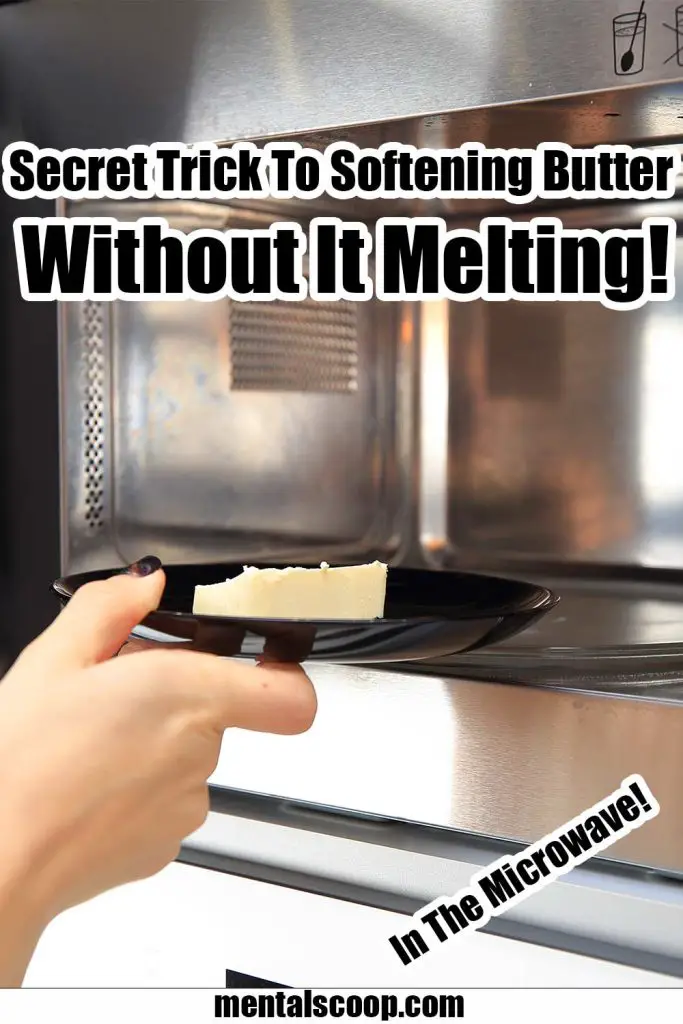Secret Trick To Softening Butter Without It Melting!

Butter is a versatile ingredient that adds richness and flavor to countless recipes. However, there’s nothing more frustrating than needing softened butter for a recipe, only to have it turn into a melted mess in the microwave. Fear not! In this article, we unveil a secret trick to soften butter perfectly, without any melting mishaps.
Why Softened Butter Matters
Before diving into the secret trick, let’s explore why softened butter is important in baking and cooking. Softened butter allows for better incorporation into doughs and batters, resulting in lighter and fluffier textures.
It also aids in creating emulsions, such as in frostings or sauces. By achieving the ideal consistency of softened butter, your recipes will turn out more consistently and delectably.
The Pitfalls of Microwaving Butter
While the microwave is often the go-to option for softening butter, it can quickly lead to unintentional melting. Microwaving butter unevenly can cause some parts to melt while others remain solid, resulting in an inconsistent texture.
Moreover, there’s a risk of overheating the butter, leading to unwanted separation or loss of structure. To avoid these pitfalls, we present an alternative method that guarantees perfectly softened butter every time.
The Secret Trick Revealed
The secret trick to softening butter without melting it in the microwave lies in the use of ambient heat. By utilizing this method, you’ll achieve the perfect softened consistency for your butter while maintaining its structural integrity. Let’s dive into the step-by-step process.
Step 1: Gather Your Materials
To begin, make sure you have all the necessary materials at hand. You’ll need a stick of cold butter, a cutting board, a butter knife or cheese grater, a bowl, and a clean kitchen towel or parchment paper.
Step 2: Prep Your Butter
Take the stick of cold butter and slice it into smaller pieces. Alternatively, you can grate the butter using a cheese grater. Smaller pieces will soften more quickly and evenly.
Step 3: Prepare the Ambient Heat Environment
Create a warm environment for your butter by filling a bowl with hot tap water. The water should be warm enough to generate a gentle heat but not so hot that it will melt the butter. Place the bowl aside.
Step 4: Let the Magic Happen
Now, place the butter pieces or grated butter into a clean kitchen towel or parchment paper. Fold the towel or paper over the butter, creating a neat bundle.
Step 5: Nestle the Bundle
Gently place the wrapped butter bundle into the bowl with hot water. Ensure the butter is fully submerged but not touching the sides or bottom of the bowl.
Step 6: Wait Patiently
Allow the butter to rest in the warm water bath for approximately 15 to 20 minutes. This duration may vary depending on the temperature of your surroundings and the desired softness of the butter.
Step 7: Test for Softness
After the designated time, carefully unwrap the butter bundle and check its softness. If it has reached the desired consistency, you’re ready to use it in your recipe. Otherwise, rewrap the butter and continue soaking it in the warm water bath for a few more minutes.
Bonus Tips and Tricks
To further enhance your butter-softening endeavors, here are a few bonus tips and tricks:
Plan ahead by taking the butter out of the refrigerator 30 minutes before you intend to soften it. This will reduce the overall time required for softening.
For urgent softening needs, you can gently press the cold butter between two pieces of parchment paper using a rolling pin. This method can expedite the process, but be cautious not to apply excessive pressure and cause the butter to become too thin.
If you find yourself with melted butter after microwaving, don’t worry! Place it in the refrigerator for a short period to firm it up before attempting the secret trick.
- Use a glass or ceramic bowl to retain heat better.
- Avoid using boiling water, as it can raise the temperature too quickly and melt the butter.
- Adjust the softening time based on the temperature and desired consistency.
- Plan ahead and soften butter in advance to save time during baking or meal preparation.
The Benefits of the Warm Water Method
The warm water method offers several advantages over traditional methods. It allows for controlled softening, ensuring that the butter reaches the perfect consistency without melting. This technique is reliable, saves time, and produces evenly softened butter for all your culinary needs.

More interesting articles you may be interested in reading:

How To Remove A Tree Stump Painlessly
10 Vital Home Maintenance Tasks You’ll Regret If You Forget
See How Much Propane Is Left In A Tank With No Gauge
Thanks for reading and be sure to share this info with your friends using the social share buttons below.
Talking about social stuff, consider liking our Facebook page to keep up to date with our articles. Check out our other articles for more mental scoops!
